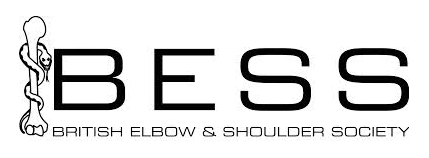FAQS
Risks associated with any surgery include infection and damage to nerves and blood vessels. Fortunatley, this is less than 1%. Other risks include failure of the repair and pain and stifness of the shoulder joint, also known as frozen shoulder.
Yes, it is advised that you seek advice from a physiotherapist to aid recovery.
This depends on the type of surgery, but on average, the wound heals within 10 days. Your arm may be immobilised in a sling for up to 6 weeks. Following this you will need physiotherapy — the first 6 weeks focusing on your range of movement and the next 6 weeks focusing on strengthening. The avergae recovery time from a repair to your shoulder is between 3-6 months.
Shoulder surgery may be broadly classified into keyhole (arthroscopic) surgery and traditional open surgery. Depending on your shoulder problem, you will be advised on which one is most appropriate for you.
Yes. Most common shoulder problems do not require surgery. Often physiotherapy and +/- a steriod injection is sufficient to alleviate shoulder pain.
At your consultation, you will be asked several questions about your general health and shoulder symptoms. You will then be examined and sent for imaging. After this, a diagnosis will be made and different treatment options will be discussed. More about deciding if you need shoulder surgery here.
If you have any pain or weakness in your shoulder or arm that is affecting your daily life.
Any pain related to the shoulder region. Any weakness in lifting or moving your arm comfortably can be assessed and investigated by a shoulder surgeon.
Whilst there are no fixed rules about this, my advice is that you cannot drive whilst your arm is in a sling. You need to feel confident that you can stop in an emergency situation and turn the steering wheel quickly if required. More about driving after shoulder dislocation here.
You can fly short haul after 48 hours and long haul after 7-10 days. More about flying post surgery here.
If you use a keyboard for work, you can use this within days as long as the weight of your arm is supported on a table and the keyboard is moved away from the edge of the table.
You can use a stationary exercise bike within days, but you must keep your arm in a sling. You can go for walks, but do not jog or run whilst the arm is in a sling. Once you are out of the sling, you will need physiotherapy guidance to start mobilising your arm safely.
It is not advisable to get the sling wet in a pool. You need to be careful whilst walking around the pool so that you dont accidentally slip and fall.
This depends on the type of surgery you have had. For a subacromial decompression or frozen shoulder capsular release, you can start moving the arm straight away. The sling is provided for comfort. If you have any repairs to the shoulder, you will need to wear the sling for 4-6 weeks to allow for biological healing of the tissues.
Wear loose comfortable clothes that have an elasticated waist band and front fastening zips are easier than buttons. Dress comfortably.
This depends on the type of work you do. If you are a manual labourer, then it is inadvisable to work whilst your arm is in the sling. If you use a keyboard for work, you can use this within days as long as the weight of your arm is supported on a table and the keyboard is moved away from the edge of the table.
Wash your hair before surgery, and if you have short hair, you should be able to wash with one hand. If you have long hair, you may need help either by someone helping you with this at home or by going to the hairdresser.
Use a front fastening bra with racer back straps. This will avoid the wound sites.






